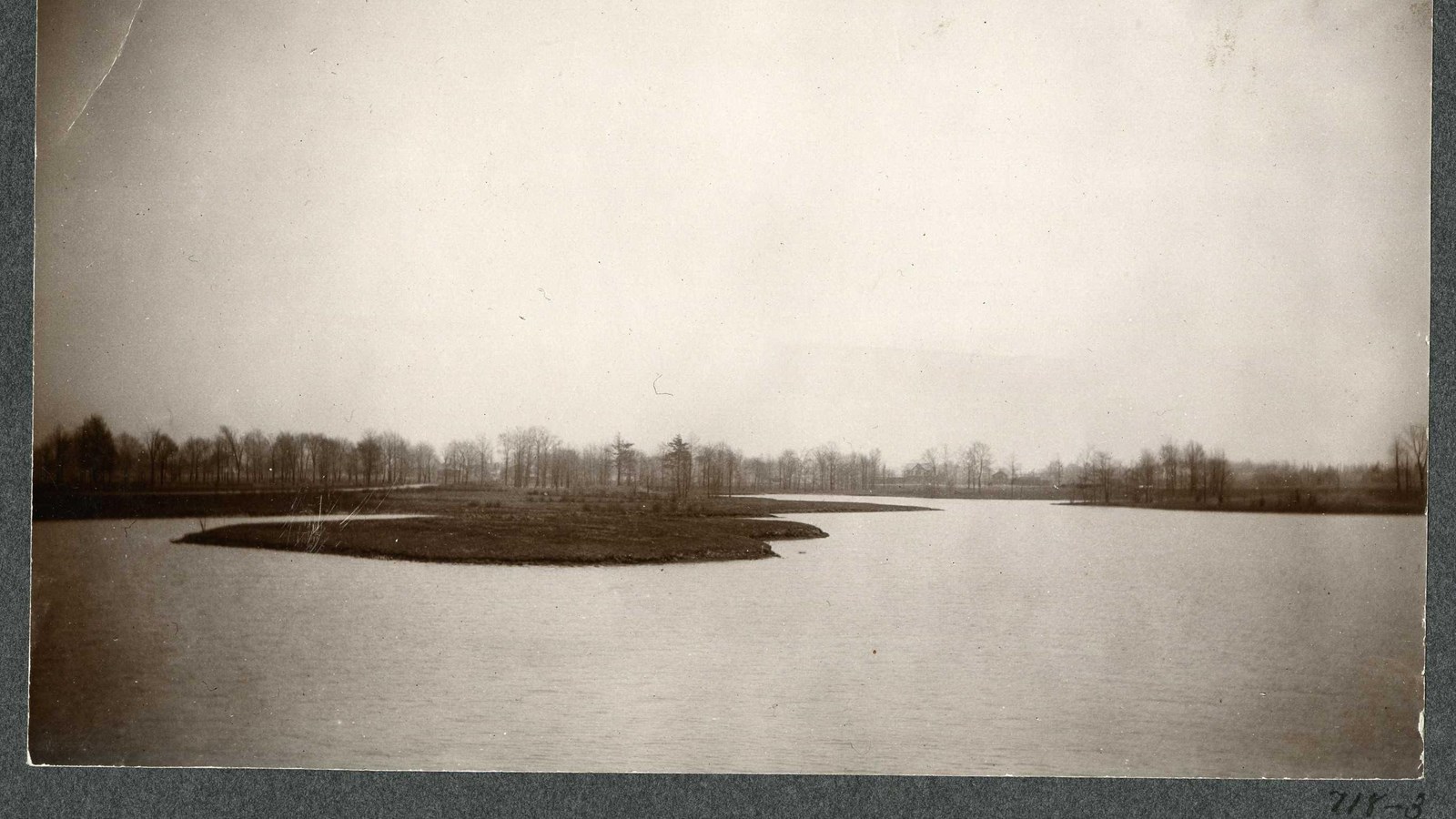Last updated: June 11, 2024
Place
South Park

Olmsted Archives
Quick Facts
Location:
Buffalo, NY
Significance:
Olmsted Designed Park
MANAGED BY:
South Park would be the second phase of work done on the Buffalo Park and Parkway System, designed by F.L. Olmsted & Co., the successor firm to Olmsted, Olmsted, and Eliot. Located a mile inland of Lake Erie, the land that would become South Park was purchased in 1891. The 156-acres of marshy farmland boarded by railways and industrial sites was composed in a roughly rectangular shape.
In early 1893, Frederick Law Olmsted provided the Buffalo Board of Park Commissioners with a design for South Park, the second of two new parks to be constructed in the southern section of Buffalo. Designed like an English landscape garden, South Park features a 22-acre lake with three densely planted islands flanked by a gently rolling meadow, with the whole park encompassed by a circuit drive and network of footpaths.
Running along the western and northern sides of South Park were railroads with multiple tracks, which Olmsted noted ““raised upon high embankments so that the trains are in full view from almost every part of the park, and the noise and smoke of the locomotives will always detract from the pleasure and healthfulness of a visit to the park.”
Between 1894 and 1910, trees adorning the pastoral landscape of South Park were planted. Of Olmsted’s many urban and picturesque water features in parks, South Park’s lake is considered one of the finest examples.
Source: "South Park- Buffalo," The Cultural Landscape Foundation
For more information and primary resources, please visit:
Olmsted Research Guide Online
Olmsted Archives on Flickr
Olmsted Online
In early 1893, Frederick Law Olmsted provided the Buffalo Board of Park Commissioners with a design for South Park, the second of two new parks to be constructed in the southern section of Buffalo. Designed like an English landscape garden, South Park features a 22-acre lake with three densely planted islands flanked by a gently rolling meadow, with the whole park encompassed by a circuit drive and network of footpaths.
Running along the western and northern sides of South Park were railroads with multiple tracks, which Olmsted noted ““raised upon high embankments so that the trains are in full view from almost every part of the park, and the noise and smoke of the locomotives will always detract from the pleasure and healthfulness of a visit to the park.”
Between 1894 and 1910, trees adorning the pastoral landscape of South Park were planted. Of Olmsted’s many urban and picturesque water features in parks, South Park’s lake is considered one of the finest examples.
Source: "South Park- Buffalo," The Cultural Landscape Foundation
For more information and primary resources, please visit:
Olmsted Research Guide Online
Olmsted Archives on Flickr
Olmsted Online
